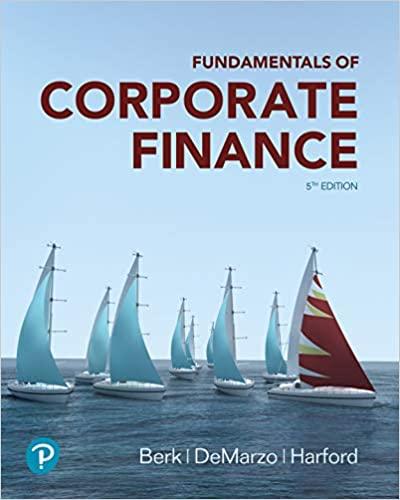Adam Rust looked at his mechanic and sighed. The mechanic had just pronounced a death sentence on
Question:
Adam Rust looked at his mechanic and sighed. The mechanic had just pronounced a death sentence on his road-weary car. The car had served him well at a cost of $500 it had lasted through four years of college with minimal repairs. Now, he desperately needs wheels. He has just graduated, and has a good job at a decent starting salary. He hopes to purchase his first new car. The car dealer seems very optimistic about his ability to afford the car payments, another first for him. The car Adam is considering is $35,000. The dealer has given him three payment options:
1. Zero percent financing. Make a $4000 down payment from his savings and finance the remainder with a 0% APR loan for 48 months. Adam has more than enough cash for the down payment, thanks to generous graduation gifts.
2. Rebate with no money down. Receive a $4000 rebate, which he would use for the down payment (and leave his savings intact), and finance the rest with a standard 48-month loan, with an 8% APR. He likes this option, as he could think of many other uses for the $4000.
3. Pay cash. Get the $4000 rebate and pay the rest with cash. While Adam doesn’t have $35,000, he wants to evaluate this option. His parents always paid cash when they bought a family car; Adam wonders if this really was a good idea. Adam’s fellow graduate, Jenna Hawthorne, was lucky. Her parents gave her a car for graduation. Okay, it was a little Hyundai, and definitely not her dream car, but it was serviceable, and Jenna didn’t have to worry about buying a new car. In fact, Jenna has been trying to decide how much of her new salary she could save. Adam knows that with a hefty car payment, saving for retirement would be very low on his priority list. Jenna believes she could easily set aside $3000 of her $45,000 salary. She is considering putting her savings in a stock fund. She just turned 22 and has a long way to go until retirement at age 65, and she considers this risk level reasonable. The fund she is looking at has earned an average of 9% over the past 15 years and could be expected to continue earning this amount, on average. While she has no current retirement savings, five years ago Jenna’s grandparents gave her a new 30-year U.S. Treasury bond with a $10,000 face value. Jenna wants to know her retirement income if she both (1) sells her Treasury bond at its current market value and invests the proceeds in the stock fund and (2) saves an additional $3000 at the end of each year in the stock fund from now until she turns 65. Once she retires, Jenna wants those savings to last for 25 years until she is 90. Both Adam and Jenna need to determine their best options.
Step by Step Answer:

Fundamentals Of Corporate Finance
ISBN: 9780135811603
5th Edition
Authors: Jonathan Berk, Peter DeMarzo, Jarrad Harford





